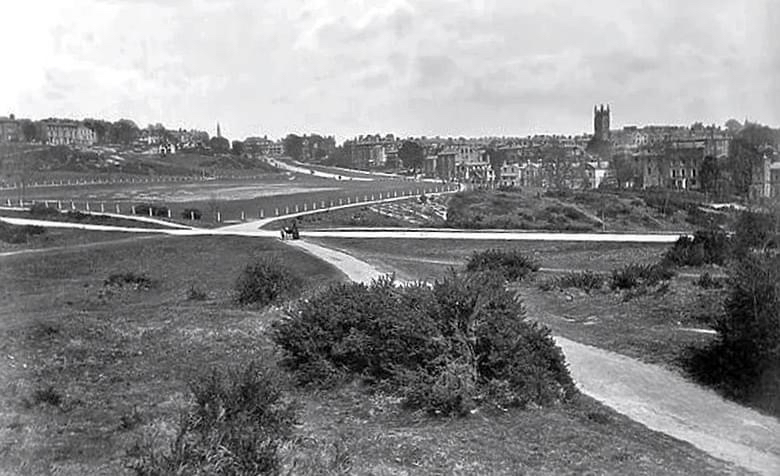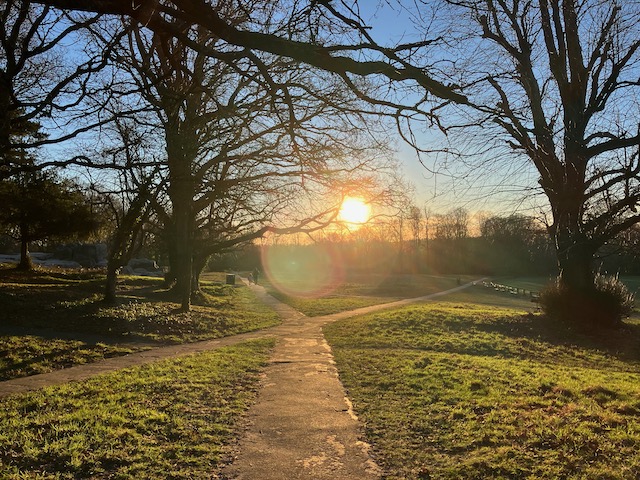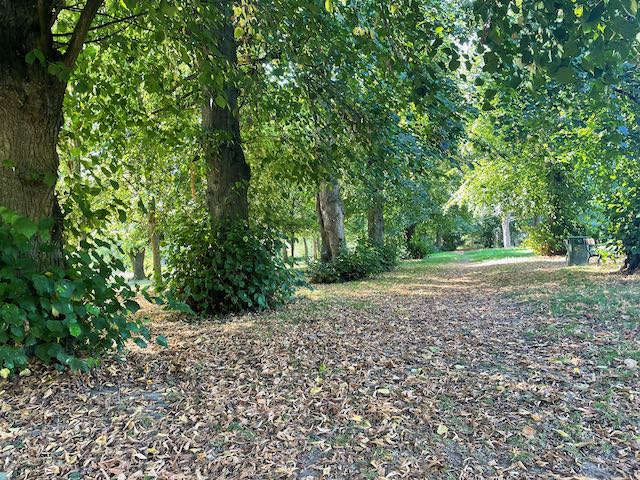
Ranger’s Blog March 2023
7th March 2023
What a busy time it has been recently! The winter is always incredibly busy for conservation work as that is when the land is at its most dormant. Since Christmas the focus has been very much on ecological projects and dealing with ash die-back which is sadly seriously impacting upon our ash trees. We have had to remove a huge amount of ash on our roadsides purely for safety reasons. This is devastating as we are losing some very beautiful trees and it is very expensive.
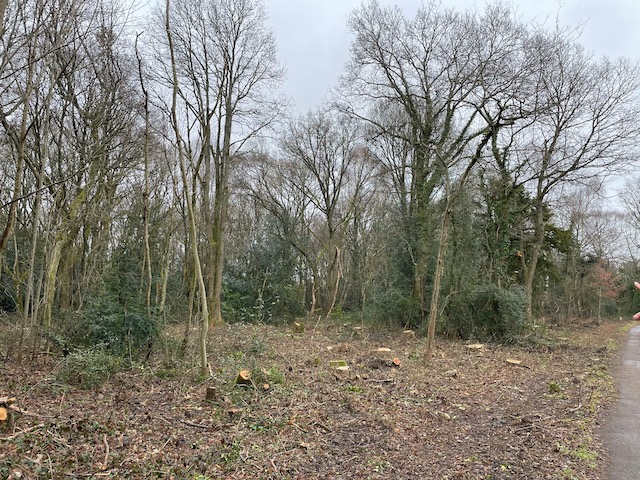
Ash trees felled on Langton Road.
However, as a professional ecologist and wildlife ranger I am able to say that there are some very positive and exciting ‘silver linings’ in places. For example, in the Tea Garden Lane and Langton Road area (between Coach Road and Langton) we have been able to work very closely with our contractors to ensure that we retained any valuable saplings and we are also planting some replacement treess in appropriate places. We have also been able to create what will be some incredibly beautiful glades in the area which will increase the wildlife value significantly. There will be more pollinators and many more birds as the number of tree and shrub species will now increase as a direct result of this work. It does look a mess at the moment but the project is far from over. We will be tidying up and creating habitat piles with what I asked the contractions to leave on the floor. It will be so beautiful as the spring arrives and over the next couple of years.
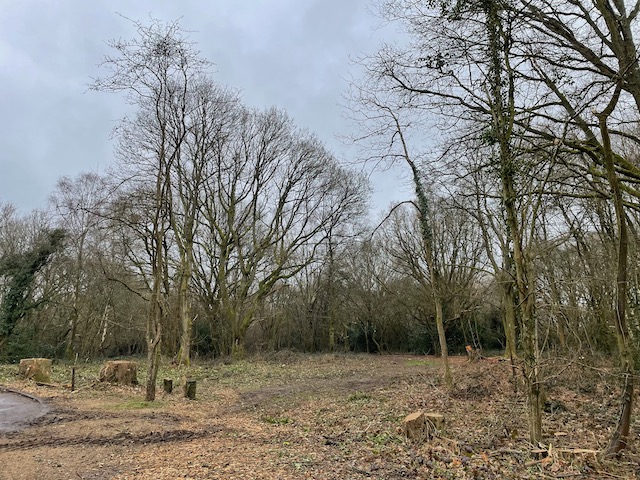
We have also been very busy with a number of other projects:
1. Denny Bottom/Eales Terrace on Rusthall Common – where we have taken back scrub from the SSSI (Site of Special Scientific interest) rocks in order to protect their status and to also open up the area to allow more butterflies and bees etc to thrive.
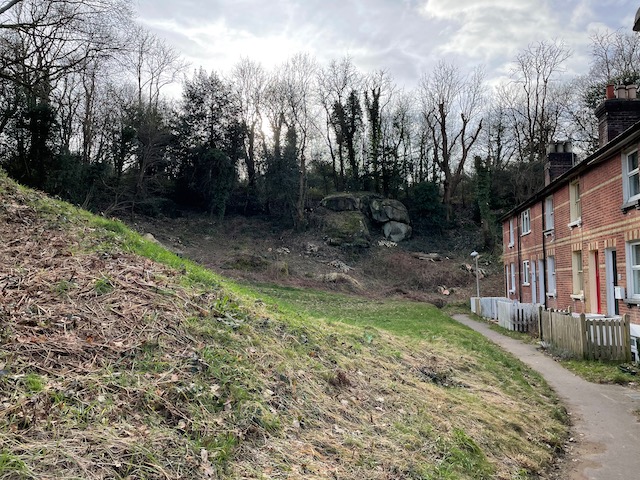
Eales Terrace
2. The hidden heather and gorse area just off of Castle Road. Here we have coppiced the heather and gorse to allow for it to grow back in different stages. This is because many different species like to make use of these plants at the different stages of their growth. So again, we should see even more wildlife using the area from spring.
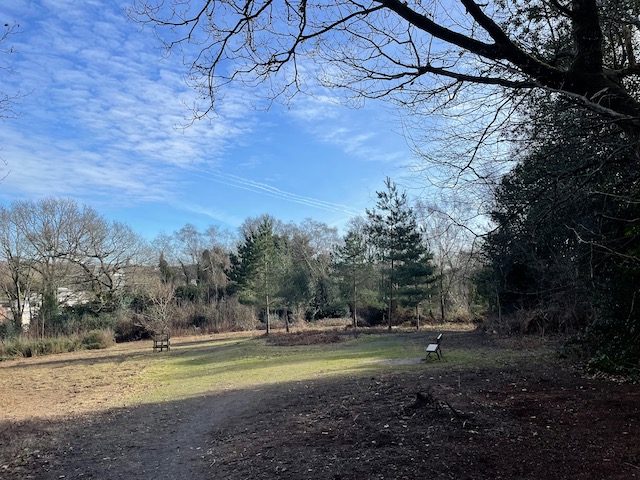
What a transformation!
3. Victorian Terraces (Between Brighton Lake and Diagonal Path) – Here we are opening up wildlife corridors and creating glades to connect the terraces glades and widen the sides of the paths. This will be a multi year project which will again see an increase in wildlife biodiversity.
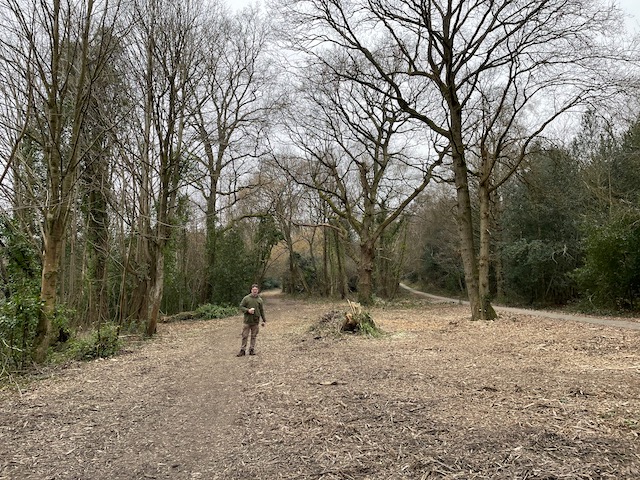
Work underway on the Terraces.
I understand that all this work can perhaps feel drastic and even counterintuitive for encouraging more wildlife. However, I can assure everyone that management of our wild spaces is essential to keep it attractive to the optimum number of species. This means that selectively felling trees or periodically coppicing large areas is very important. Without this work the tree canopy will fill with nothing but holly etc and become limited to a much-diminished number of birds and insects.
Finally, I once again wish to extend my gratitude to the Friends of the Commons and the Freehold Tenants who generously fund our ecological projects. Also, huge thanks to those who freely give their time to volunteer with us. From litter picking to cutting back scrub/bramble (in the right places!), we could not manage the Commons without you. Thank you!
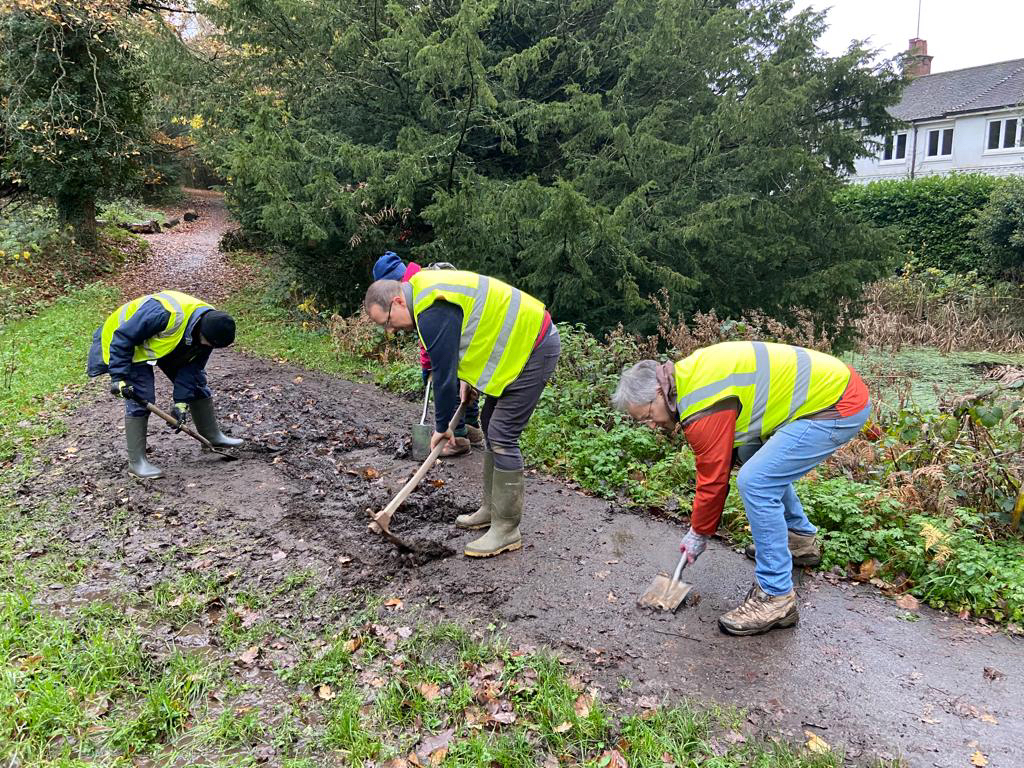
Volunteers helping to clear the footpath by Bracken Cottage pond.
